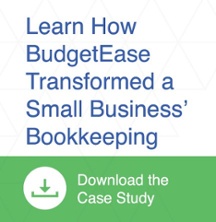 Do you ever wonder where your business’ money is going? If not, it’s time to look further. A great way to find out is by using the cash flow statement, or statement of cash flows. Along with the balance sheet and income statement, the cash flow statement will identify where your revenue is coming from and where it’s going.
Do you ever wonder where your business’ money is going? If not, it’s time to look further. A great way to find out is by using the cash flow statement, or statement of cash flows. Along with the balance sheet and income statement, the cash flow statement will identify where your revenue is coming from and where it’s going.
What Is a Cash Flow Statement?
The cash flow statement studies operating, financing, and investing activities to show where your money is coming from and where it’s being spent. It allows investors and creditors to assess a business' ability to meet obligations and produce future net cash inflows while determining the need for external financing. Ideally, you will have a positive cash flow, meaning your cash inflows were greater than your cash outflows.
If the cash flow is negative, the business might not have enough cash to finance operations. If the cash flow is positive, the business has more money going into it than it has coming out. You must take this extra step of looking at your cash flow to make sure you have enough funds to keep your business running.
Preparing a Cash Flow Statement
There are two methods for determining cash flow: direct and indirect. Both methods look at cash flow over an accounting period, usually 12 months.
Direct Method: This method is used less often and requires more information than the indirect method. The Financial Accounting Standards Board (FASB) prefers this method as it lists cash inflows and outflows for every type of operating activity, including:
- Cash collected from customers
- Employee salaries
- Interest and dividends received
- Cash paid to suppliers or vendors
- Interest paid
- Income tax paid
Indirect Method: This is the most popular way to create a statement of cash flows. It starts by looking at the net income from the income statement, and it’s broken down into three main parts:
- Operating activities include revenue and operating expenses. They are only included if the cash payment occurred during the accounting period the statement reports on.
- Investing activities include purchasing property or equipment. It may also include the acquisition of a business.
- Financing activities include issuing shares, selling or repurchasing stock, and paying debt and dividends.
How to Prepare a Statement of Cash Flows
Because it is the most common, the steps below use the indirect method of cash flow preparation.
Step 1: Prepare the operating activities section by converting net income from accrual to cash basis. You will need to add back non-cash expenses such as depreciation.
Step 2: Prepare the investing activities section by presenting cash activities for noncurrent assets. For example, if equipment is sold at a loss, the loss would be shown on the income statement as a deduction to calculating net income. The equipment is not a current asset, and cash activity related to the disposal should be included in the activities section. The loss on the sale shown as a deduction on the income statement is added back to net income. Essentially you are reversing the loss because it is not an operating expense.
Step 3: Prepare the financing activities section by presenting cash activities for noncurrent liabilities and owners’ equity. There is an inverse relationship between the change in a current asset account and how it is shown as an adjustment whereas there is a direct relationship between the change in a current liability and how it is shown as an adjustment.
- Increases in current assets are deducted from net income and decreases are added to net income
- Increases to current liabilities are added to net income and decreases in current liabilities are deducted from net income
Step 4: Reconcile the change in cash from the beginning of the period to the end of the period. This step is to show that the change in the statement of cash flows agrees with the change in cash on the balance sheet.
Whether you’re determining where your money is coming from and where it’s going or looking for investors and financing – the statement of cash flows allows you to see how cash is moving in and out of a business. With the information provided by the statement of cash flows, you will be well-prepared to make informed decisions.
If this is out of your comfort zone and you need help preparing your cash flow statement, get in touch with us at www.budgetease.biz. We can help you build one for your small business.






